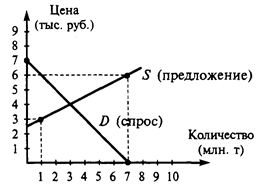READING. 1 Skim the text about the nature of quality
1 Skim the text about the nature of quality. Find an appropriate heading for each paragraph.
a. economic definition of quality b. a difficult term to define c. philosophical aspect of quality d. techniques for managing the quality e. total quality organisation f. quality in common use 1. ___ A quality (from Latin qualita) is an attribute or a property. In contemporary philosophy, the idea of quality and especially how to distinguish certain kinds of qualities from one another remains controversial The Greek philosopher Aristotle (384 - 322 BC) analyzed qualities in his work, the Categories. According to him, qualities may be attributed to things and persons or be possessed by them. John Locke, an English philosopher and physician (1632 – 1704), presented a distinction between primary and secondary qualities in his ‘An Essay Concerning Human Understanding’. For him, a quality is an idea of a perception. Primary qualities are intrinsic to an object—a thing or a person—whereas secondary qualities are dependent on the subjective interpretation and the context of appearance. 2. ___ Subjectively, something might be good because it is useful, because it is beautiful, or simply because it exists. Determining the quality therefore involves an understanding of use, beauty and existence. The usefulness aspect is reflected in the common usage of quality. In common use, quality can mean a high degree of excellence (“a quality product”), a degree of excellence or the lack of it (“work of average quality”), or a property of something (“the addictive quality of alcohol”). 3. ___ If you look at all technical or economic aspects of quality, you will also see that there is no specification of quality. The word quality seems to trigger a multitude of definitions, so selecting a single definition is difficult. Table 1.1. presents an array of definitions, each of which is concise and meaningful. There seems to be no single correct or best definition. The meaning of quality differs depending upon circumstances and perceptions. Quality is a different concept when tangible products are the focus versus the perception of a quality service. The meaning of quality is also time-based or situational. 4. ___ A frequently used definition of quality in economics is “ Quality is the totality of features and characteristics of a product or service that bear the ability to satisfy stated or implied needs of customers ”.These may include performance, appearance, availability, delivery, reliability, maintainability, cost effectiveness and price. It is, therefore, imperative that the organisation knows what these needs and expectations are. In addition, having identified them, the organisation must understand them, and measure its own ability to meet them. 5. ___ Quality starts with market research – to establish the true requirements for the product or service and the true needs of the customers. However, for an organisation to be really effective, quality must span all functions, all people, all departments and all activities and be a common language for improvement. The cooperation of everyone at every interface is necessary to achieve a total quality organization. Customers, managers, engineers, line operators, and clerks at every level of an organization’s hierarchy must be involved in enhancing and managing quality. 6. ___ Numerous methodologies have been created to assist in managing the quality. Many different techniques and concepts have evolved to improve product or service quality. There are two common quality-related functions within a business. One is quality assurance which is the prevention of defects, such as by the deployment of a quality management system. The other is quality control which is the detection of defects, most commonly associated with testing which takes place within a quality management system.
|




